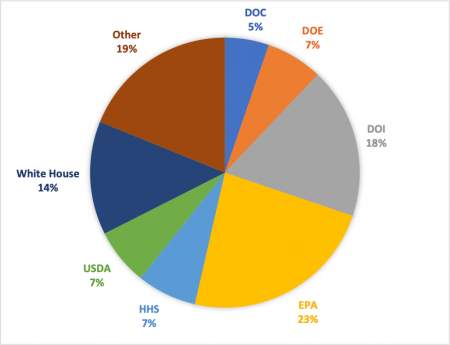By Hillary Aidun
Last month, the Environmental Protection Agency’s (EPA) Science Advisory Board (SAB) issued a draft report sharply criticizing the analysis underpinning the agency’s proposed rollback of new motor vehicle standards. The report is one more piece of evidence that the Trump administration EPA is seeking to enact environmental policies that sideline science. This post focuses on several climate-relevant aspects of the SAB’s draft report.
In 2012, EPA and the National Highway Traffic Safety Administration (NHTSA) promulgated new rules to set greenhouse gas emission and fuel economy standards for new motor vehicles. The rules created requirements for model years 2017-2021 and 2022-2025, which would become more stringent each year, achieving greater greenhouse gas reductions over time. In 2018, the agencies issued a proposed rule, the Safer Affordable Fuel-Efficient (SAFE) Vehicles Rule, to freeze the standards at 2020 levels through 2026, rather than tightening them each year. The final SAFE rule has not yet been published. However, the agencies have finalized a portion of the rule that revokes California’s authority to set motor vehicle regulations that are more climate-protective than the federal requirements, including greenhouse gas emissions standards that fifteen other states have adopted and a zero-emission vehicle mandate embraced by twelve other states.
The SAB reviews and comments on scientific issues raised by certain major agency actions. In December the SAB released a report identifying “significant weaknesses” in the analysis underpinning the proposed SAFE Rule. In fact, the SAB concluded that the Trump Administration’s reasoning was so flawed that a corrected analysis could show that the existing standards, which the SAFE rule would replace, actually provide a better outcome. The report identifies several major flaws in the Administration’s analysis.
First, the SAB faults the agencies for failing to account for California’s climate-protective regulations. In assessing the costs and benefits of different policy alternatives, the agencies did not consider the fact that complying with the existing standards is easier because California’s regulations have increased deployment of zero-emission vehicles. Moreover, the agencies’ analysis omits any assessment of the costs and benefits of revoking California’s authority to set its own vehicle emission rules. The SAB urges the Administration to fill in these gaps in its final analysis.
Second, the agencies’ analysis assumes that under the SAFE rule six million fewer cars would be on the road by 2029. However, as the SAB explains, basic economic theory suggests that people will buy more cars as compliance costs fall, bringing vehicle prices down with them.
Third, the agencies assume that as stricter regulations make new cars pricier, more people will hang on to their old cars, which are associated with safety risks and higher levels of pollution. By the same token, according to the agencies, the laxer SAFE rule will lead to a rise in the sale of new, safer, less-polluting vehicles. However, the SAB cautions that the agencies overstate the likely bump in new vehicle sales that deregulation will produce. Moreover, the SAB warns that the agencies’ math rests on the unrealistic assumption that consumers have zero willingness to pay for improved gas mileage—in other words, that consumers are not at all willing to pay a premium for more fuel-efficient cars that will save them money in the long run.
Fourth, the agencies’ analysis relies heavily on the assumption that people with more fuel-efficient cars will simply drive more, offsetting any reduction in fuel consumption. While some “rebound effect” could happen, the SAB warns that the agencies seem to have inflated it here. Given this, the agencies likely underestimate the benefits of tightening fuel economy standards, and in the process, overstate the relative benefits of their proposal to freeze the standards at 2020 levels. In short, the Trump Administration appears to have concluded that the SAFE rule would lead to a smaller, newer fleet and less driving, but without any sound analytical foundation.
The critiques are all the more remarkable given that the EPA has sought to reshape its list of science advisors to make the SAB more sympathetic to its deregulatory agenda. The SAB report has been covered in several news outlets. Comments will be accepted throughout the advisory process.



